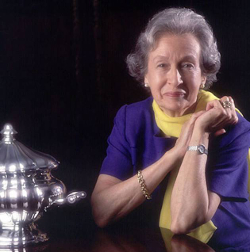Speak to ten different Spanish food historians and you will likely be on the end of ten different views as to who we should credit for originating and developing Spanish food.
Who had the greatest influence on the culinary delights of the country? The Phoenicians? The Romans? The Visigoths? The Moors?
Few acknowledged experts agree on anything.
But there are significant times in history at which we can pin down those who played a role in the Spanish food we all enjoy today.
The Phoenicians were responsible for bringing us the olive – something we now take for granted when it comes to certain Spanish meals.
The Romans began exporting olive oil from Spain back home to Rome. They were also experts when it came to the still popular skill of preserving fish.
As long ago as the 8th century the Moors were cultivating apricots, quinces, almonds and pistachios. The word for orange (naranja) and carrot (zanahoria) have their roots in the language of the Moors.
And where would we be without the spices the Moors left behind? Where would Spanish cooking be without saffron (azafrán)?
The Moors and the Arabs can also take credit for certain herbs and fruits. The Arabs brought us the pomegranate (Granada), which itself gave its name to the great city of Granada in Andalucia.
The Arabs were busy trading with the Persians and that business led to rice and aubergines making their way to Spain from India, melons coming from Africa and the fantastic figs on offer in Spain today making the journey from Greece.
The Spanish today have a very sweet tooth but don’t blame them. They got that habit from the sweet foods introduced to Spain by the Moors. In cities such as Granada, where the Moorish influence remains prevalent, you can feast on lots of sweet pastries and desserts that have their origin in North Africa. Honey and almonds are often central ingredients to these tasty snacks.
In the 13th and 14th centuries it was the Spanish conquistadors who sailed home from the New World laden down with the likes of potatoes, beans, courgettes and peppers. To contemplate Spanish meals today without those ingredients is, frankly, inconceivable.
Spanish cookbooks can be traced back to the 14th century. They were written in Catalan. In 1324 the book Libre de Sent Sovi included recipes from Catalunya, and suggested cooking techniques.
Chocolate is often used in Spanish cooking and we have a gentleman called Hernán Cortés to thank for that. He brought chocolate to the country when he conquered Mexico, along with chillies, turkey, vanilla and tomatoes.
 In the 19th-century olive oil took over from lard as a staple ingredient when it came to cooking Spanish food. Credit for that is often awarded to Angel Muro, whose 1894 cookbook El Practicón was much respected.
In the 19th-century olive oil took over from lard as a staple ingredient when it came to cooking Spanish food. Credit for that is often awarded to Angel Muro, whose 1894 cookbook El Practicón was much respected.
But it was the book called simply "1080 recipes" by Simone Ortega in 1972 that became one of the first must-have cookbooks in Spanish kitchens. It still sells well today. More than 3 million copies have sold worldwide in the past 35 years and the book was translated into English as recently as 2007. However, it has become the backbone of Spanish home cooking and has helped more than any other book to spread Spanish food around the globe.
.jpeg) Now a vast number of Spanish cookbooks are found in the kitchens of homes all over the world.
Now a vast number of Spanish cookbooks are found in the kitchens of homes all over the world.
Spanish food has evolved over the centuries. It really doesn’t matter who takes the credit for the past.
Just so long as it keeps tasting better with every passing year.
Available here:
https://www.casadellibro.com/libro-1080-recetas-de-cocina/9788413621005/11757099